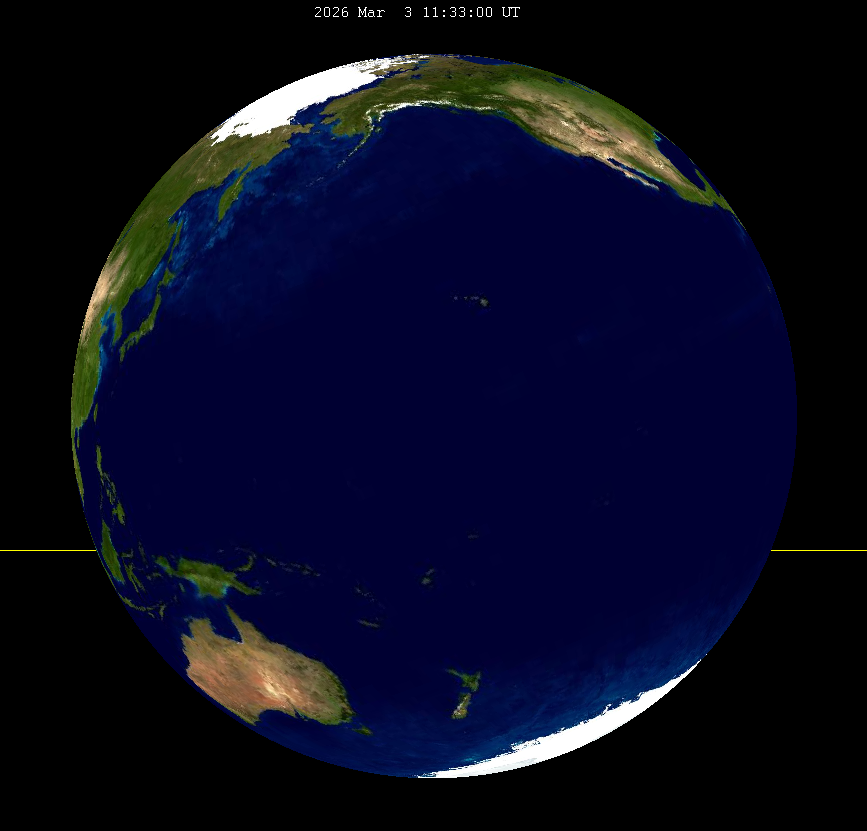March 2026 Lunar Eclipse on:
[Wikipedia]
[Google]
[Amazon]
A total

Saros cycle 133
* 2026-03 2026-03 2026 in science {{lunar-eclipse-stub
lunar eclipse
A lunar eclipse occurs when the Moon moves into the Earth's shadow. Such alignment occurs during an eclipse season, approximately every six months, during the full moon phase, when the Moon's orbital plane is closest to the plane of the Earth ...
will take place on Tuesday, March 3, 2026, the first of two lunar eclipses in 2026.
This eclipse is the third of an ''almost tetrad'', with others being 14 Mar 2025 (T), 07 Sep 2025 (T) and 28 Aug 2026 (P).
Visibility
It will be completely visible over the Pacific, western USA and Canada, and New Zealand, will be seen rising over Australia and Asia, and setting over the rest of the Americas.
Related eclipses
Eclipses in 2026
* An annular solar eclipse on 17 February. * A total lunar eclipse on 3 March. * A total solar eclipse on 12 August. * A partial lunar eclipse on 28 August.Lunar year series
Saros series
This lunar eclipse is part of series 133 of theSaros cycle
The saros () is a period of exactly 223 synodic months, approximately 6585.3211 days, or 18 years, 10, 11, or 12 days (depending on the number of leap years), and 8 hours, that can be used to predict eclipses of the Sun and Moon. One saros period ...
, which repeats every 18 years and 11 days. Series 133 runs from the year 1557 until 2819. The previous eclipse of this series occurred on 21 February 2008 and the next will occur on 13 March 2044.
It is the 7th of 21 total lunar eclipses in series 133. The first was on 28 December 1917. The last (21st) will be on 3 August 2278. The longest two occurrences of this series (14th and 15th) will last for a total of 1 hour and 42 minutes on 18 May 2152 and 30 May 2170. Solar saros 140
Saros cycle series 140 for solar eclipse
A solar eclipse occurs when the Moon passes between Earth and the Sun, thereby obscuring the view of the Sun from a small part of the Earth, totally or partially. Such an alignment occurs during an ...
interleaves with this lunar saros with an event occurring every 9 years 5 days alternating between each saros series.
Metonic cycle (19 years)
Inex series
Half-Saros cycle
A lunar eclipse will be preceded and followed by solar eclipses by 9 years and 5.5 days (a half saros).Mathematical Astronomy Morsels, Jean Meeus, p.110, Chapter 18, ''The half-saros'' This lunar eclipse is related to two annular solar eclipses ofSolar Saros 140
Saros cycle series 140 for solar eclipse
A solar eclipse occurs when the Moon passes between Earth and the Sun, thereby obscuring the view of the Sun from a small part of the Earth, totally or partially. Such an alignment occurs during an ...
.
See also
*List of lunar eclipses
There are several lists of lunar eclipses
On the Moon, by the Earth
; Type
* List of central lunar eclipses
* Total penumbral lunar eclipse
; Classification
* List of saros series for lunar eclipses
* Tetrad (astronomy) contains lists of tetrads ...
and List of 21st-century lunar eclipses
There will be 230 lunar eclipses in the 21st century (2001–2100): 87 penumbral, 58 partial and 85 total.
Eclipses are listed in sets by lunar years, repeating every 12 months for each node. Ascending node eclipses are given a red background hig ...
References
External links
Saros cycle 133
* 2026-03 2026-03 2026 in science {{lunar-eclipse-stub